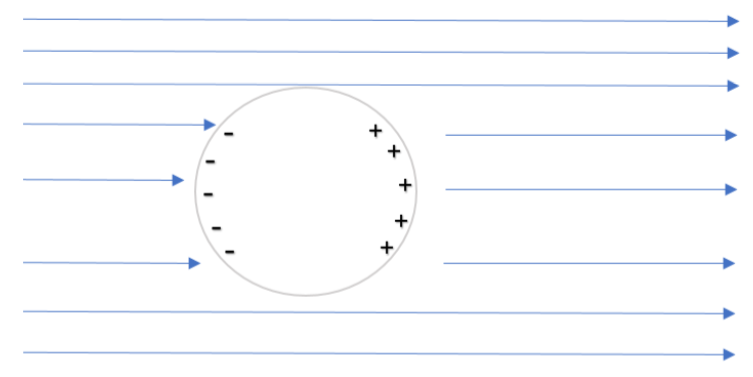
Explain why the electric field inside the conductor placed in an electric field is always zero.
Answer
426.6k+ views
Hint: Electric field is a conceptual field that is assumed to be produced from a positive charge and terminate on a negative charge. This concept doesn’t have physical significance but used to understand many physical phenomena through intuition. A conductor is a material having many free electrons available, hence is a good medium for the passage of electricity.
Complete step-by-step solution:
A conductor is a material that has a large number of free electrons available for the passage of current. Due to a large number of electrons, the force of repulsion acting in between them is also very high. Hence in order to minimize the repulsion between electrons, the electrons move to the surface of the conductor. Hence we can say that the net charge inside the conductor is zero. This can be understood mathematically using Gauss law. Since there is no charge inside the conductor, when placed inside the electric field, more negative charge comes to that part of the conductor’s surface on which the electric field is applied. To nullify this effect of negative charges, proportional positive occupies the opposite side of the conductor’s surface. This whole phenomenon is such that “ When a conductor is placed inside an electric field, the charges inside the conductor arrange themselves in such a fashion, that electric field inside the conductor becomes zero” as shown in the figure.

Note: One can comment here that if positive and negative charges get separated by some distance then there must be a potential difference inside the conductor and hence there must be an electric field from positive to negative charges! This statement can be justified by saying that they always arrange themselves in such a fashion that the electric field inside the conductor must become equal and opposite to the externally applied field and hence the net electric field inside the conductor is zero.
Complete step-by-step solution:
A conductor is a material that has a large number of free electrons available for the passage of current. Due to a large number of electrons, the force of repulsion acting in between them is also very high. Hence in order to minimize the repulsion between electrons, the electrons move to the surface of the conductor. Hence we can say that the net charge inside the conductor is zero. This can be understood mathematically using Gauss law. Since there is no charge inside the conductor, when placed inside the electric field, more negative charge comes to that part of the conductor’s surface on which the electric field is applied. To nullify this effect of negative charges, proportional positive occupies the opposite side of the conductor’s surface. This whole phenomenon is such that “ When a conductor is placed inside an electric field, the charges inside the conductor arrange themselves in such a fashion, that electric field inside the conductor becomes zero” as shown in the figure.

Note: One can comment here that if positive and negative charges get separated by some distance then there must be a potential difference inside the conductor and hence there must be an electric field from positive to negative charges! This statement can be justified by saying that they always arrange themselves in such a fashion that the electric field inside the conductor must become equal and opposite to the externally applied field and hence the net electric field inside the conductor is zero.
Recently Updated Pages
Master Class 12 Business Studies: Engaging Questions & Answers for Success

Master Class 12 English: Engaging Questions & Answers for Success

Master Class 12 Social Science: Engaging Questions & Answers for Success

Master Class 12 Chemistry: Engaging Questions & Answers for Success

Class 12 Question and Answer - Your Ultimate Solutions Guide

Master Class 12 Economics: Engaging Questions & Answers for Success

Trending doubts
Give 10 examples of unisexual and bisexual flowers

Draw a labelled sketch of the human eye class 12 physics CBSE

Differentiate between homogeneous and heterogeneous class 12 chemistry CBSE

Differentiate between insitu conservation and exsitu class 12 biology CBSE

What are the major means of transport Explain each class 12 social science CBSE

Franz thinks Will they make them sing in German even class 12 english CBSE




